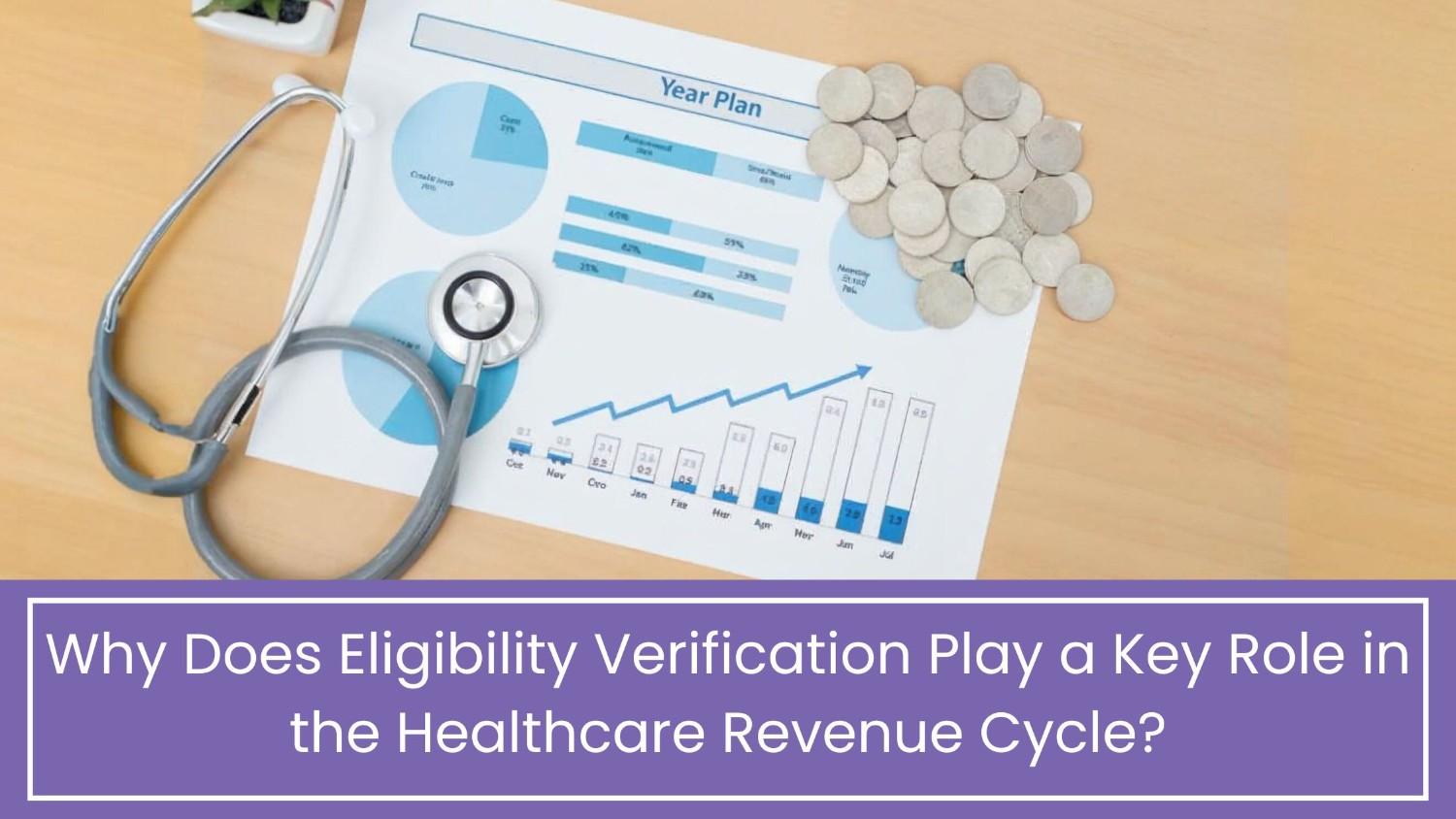How Eligibility Verification Impacts Healthcare Revenue Cycle Success
How Eligibility Verification Impacts Healthcare Revenue Cycle Success goes far beyond routine checks—it’s the foundation of financial stability. When done incorrectly, it leads to denied claims, patient dissatisfaction, and revenue loss. At Practolytics, we understand the crucial role this process plays. Our team ensures real-time insurance coverage validation, identifies patient financial responsibility, and confirms authorization requirements upfront. This results in faster reimbursements, fewer billing errors, and a smoother patient experience. Don’t let hidden eligibility issues undermine your practice. With our expertise, you can focus on delivering care while we optimize your revenue cycle from the very first step.
Table of Contents
Why Does Eligibility Verification Play a Key Role in the Healthcare Revenue Cycle?
If you’re running a medical practice, you already know the pressure of balancing patient care and the financial health of your clinic. Between evolving payer policies, tighter reimbursement margins, and increasing patient financial responsibility, the revenue cycle has never been more complex—or more critical. And yet, one area consistently underestimated (and underinvested in) is eligibility verification.
Let’s skip the basics. We’re not here to explain what eligibility verification is. You already know it involves checking whether a patient is covered by insurance. Instead, let’s explore why failing to do this well causes major revenue leaks—and how getting it right can completely change the game for your practice.
The Quiet Killer of Revenue? Inaccurate Eligibility Checks
Think about this: according to the American Medical Association, eligibility and benefit verification process errors are one of the most costly administrative transactions in healthcare. And yet, many practices still treat it as a checkbox activity. Do it quickly. Move on. Deal with the denials later.
But here’s what that “move fast, fix later” mentality leads to:
- Delayed or denied claims
- Repeated billing cycles
- Patient confusion
- Provider burnout
- Slower cash flow
In fact, a 2023 MGMA survey found that 74% of practices report an increase in claim denials—and the majority of those are linked directly to eligibility or prior authorization issues.
We’re talking real money. It’s estimated that over $16.3 billion is wasted annually due to errors related to insurance eligibility and benefit verification services.
So why are we still treating it like a back-office chore?
It’s Not Just About Coverage—It’s About the Right Coverage!
Eligibility verification is more than checking if a patient has insurance. It’s verifying what services are covered, how much will be paid, and what portion the patient is responsible for.
Take two patients, both with insurance. One has a high-deductible plan and hasn’t met their deductible. The other has out-of-network coverage only. If your front desk doesn’t catch that upfront, your billing team ends up chasing payments, appealing denials, and sending confusing statements to patients weeks after the visit.
Let’s look at how small gaps in eligibility can cause a domino effect:
|
Scenario |
Impact on Revenue |
Patient Experience |
Billing Complexity |
|
Incorrect plan type verified |
Denial or reduced reimbursement due to out-of-network submission or plan mismatch. |
Confused by unexpected bills and may lose trust in the clinic. |
Requires rechecking payer data, possible appeals, and resubmission—adds hours of admin work. |
|
Missed deductible / out-of-pocket |
Full balance unexpectedly shifted to the patient, delaying or forfeiting payment. |
Shocked by large bills they didn’t expect; some may refuse to pay. |
Staff must initiate patient collections and educate about benefit design after the fact. |
|
Failure to check COB |
Claim is rejected when payer flags incorrect primary coverage—resulting in no payment. |
Frustration over repeated delays and resubmissions; can lead to complaints. |
Requires verifying dual coverage, correcting the payer order, and resubmitting claims. |
|
Missed pre-authorization requirement |
Entire claim denied due to lack of required prior authorization—non-recoverable. |
Patients perceive the practice as disorganized or negligent. |
Complete loss of revenue. Appeals are rarely successful. Staff must create better pre-visit checks |
These aren’t hypothetical. We’ve seen practices lose tens of thousands of dollars over the course of a year due to small, repeated eligibility errors.
Why Most Practices Are Struggling to Keep Up?
Let’s be honest: eligibility verification is becoming harder, not easier. Payers are constantly updating their policies, shifting benefits, introducing tiered plans, and increasing documentation requirements.
Manual eligibility verification takes time—time your staff doesn’t always have. Even with portals, phone calls, and EDI tools, it’s not foolproof. Add to that high staff turnover or lack of training, and suddenly the first step in your revenue cycle is already off-track.
More importantly, verification must be specific to the service. A generic check won’t tell you whether that cardiology stress test or dermatology biopsy requires prior auth or falls under a carve-out.
If you’re treating eligibility like a one-size-fits-all checkbox, you’re already losing money.
Financial Ripple Effect
When eligibility errors slip through, the cost isn’t just a denied claim. It’s staff time spent on rework, patient frustration leading to no-shows, and a dent in your cash flow.
Here’s what we’ve seen in real-world scenarios:
- A mid-sized orthopedic group missed payer eligibility rules for out-of-state patients. Result? $78,000 in annual denied services.
- A multispecialty practice didn’t check secondary insurance details at the front desk. They ended up writing off over $110,000 in patient balances in just one year.
- One pain management clinic was verifying eligibility but not verifying pre-auth requirements—leading to a 14% denial rate that could’ve been avoided entirely.
You can’t afford to leave this step to chance anymore.
What “Good” Eligibility Verification Really Looks Like?
So what does it mean to verify eligibility effectively? At Practolytics, we’ve built eligibility systems and teams that go far beyond simple checks. Effective verification means:
- Verifying active coverage
- Understanding plan-specific requirements
- Identifying service-level exclusions
- Verifying in- and out-of-network status
- Capturing co-pay, deductible, and out-of-pocket status
- Confirming prior auth or referral needs
And perhaps most importantly: doing it before the patient walks in.
This isn’t just a billing step. It’s a patient engagement step. Setting accurate expectations up front increases transparency and payment likelihood.
Eligibility + Patient Communication = Faster Payments
A crucial but overlooked piece of eligibility is how it connects to patient financial conversations.
If your front desk verifies that a patient owes a $100 copay, and clearly communicates it at check-in, you’re more likely to collect it right away. But if that information isn’t available until weeks later? You’re sending a bill to someone who’s already moved on—and possibly annoyed.
At Practolytics, our clients see up to 30% faster patient collections simply because of improved eligibility and point-of-service communication.
Scaling Eligibility Across Multi-Specialty and Multi-State Clinics!
We work with over 28 medical specialties across 31 states. That means we’ve seen how different eligibility rules, payer structures, and workflows operate across a wide range of scenarios—from behavioral health to cardiology to urgent care.
It’s not just about checking coverage. It’s about building an eligibility strategy that scales. Whether you’re a single-specialty clinic or a growing enterprise, your eligibility process needs to:
- Support specialty-specific needs
- Adapt to multi-state payer differences
- Maintain HIPAA compliance (which we’re proud to be 100% compliant on)
- Integrate with your EHR and PM system
That’s not something you can build overnight—or maintain without dedicated resources.
Should You Really Be Handling Eligibility Verification In-House?
Let’s be real—eligibility verification is one of those things that sounds simple… until it’s not. It’s more than checking if a patient has insurance. It’s figuring out what’s actually covered, what needs prior auth, how much the patient owes, and whether the plan even applies to your services.
And when that process isn’t airtight, everything downstream starts to wobble—claims get denied, patients get confused by their bills, and your staff spends hours trying to fix things that could’ve been avoided with a five-minute check.
That’s why more practices are choosing to outsource eligibility verification. Not because they can’t do it, but because their time and energy are better spent elsewhere.
At Practolytics, we handle eligibility verification as part of a larger goal: helping you run a financially healthy, operationally smooth practice. With more than 5 million claims processed every year and 1,400+ providers across 31 states, we’ve seen firsthand how many revenue leaks start with something as basic as eligibility.
Outsourcing it to us doesn’t just mean one less thing for your front desk to juggle. It means:
- You get experienced people who actually understand payer policies and catch things before they turn into denials.
- We verify eligibility in detail—not just whether coverage exists, but whether the service is covered, what the patient’s cost share is, and whether there are any pre-auth needs.
- We help your front office communicate clearly with patients, so there are fewer awkward billing surprises later.
- And because our systems work with the tools you’re already using, it all fits right into your existing process.
It’s not just about saving time—it’s about avoiding costly mistakes, giving your staff some breathing room, and making sure your revenue cycle starts on solid ground.
Let’s Wrap This Up!!!
Eligibility verification might seem like a small step, but it sets the tone for everything that follows. If you skip it or rush it, you’ll feel the consequences in your claims, in your collections, and in your patient relationships.
But when it done right? Everything flows more smoothly. Your medical billing team isn’t cleaning up preventable messes. Your patients know what to expect. And your bottom line reflects the effort.
That’s what we focus on at Practolytics—building smarter systems that help practices like yours thrive without burning out your staff.
ALSO READ – Understanding Eligibility and Benefits Verification: A Guide for Medical Practices
Talk to Medical Billing Expert Today — Get a Free Demo Now!






